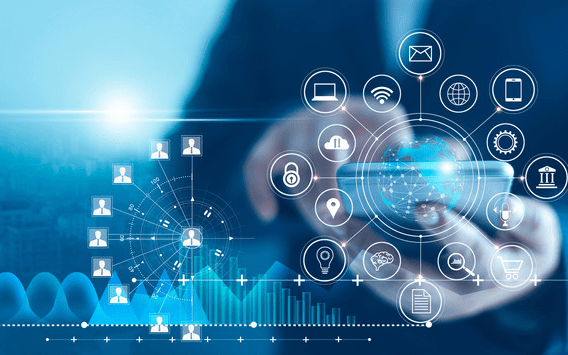Transforming Software Delivery through Gen AI and LLMs

In today’s world, digital transformation is no longer optional—it’s a business imperative. Enterprise IT teams are under constant pressure to accelerate software delivery without compromising quality. As companies increasingly depend on digital products to gain a competitive edge, software engineering has become a mission-critical function, consuming a significant share of technology budgets. Yet, traditional Software Development Life Cycles (SDLCs) often fall short of meeting modern business demands, weighed down by legacy processes that cause inefficiencies and delays.
To overcome these challenges, organizations must rethink the SDLC from the ground up—especially as new technologies like Large Language Models (LLMs) and Generative AI open unprecedented opportunities. These advancements promise to reshape software development by boosting productivity, automating repetitive tasks, and narrowing the IT skills gap.
In this white paper, Sathishkumar Shahji, Technical Architect and Appian CoE Lead at WNS-Vuram, examines the disruptive potential of LLMs and Generative AI. He shares practical insights on how enterprises can integrate these technologies into their software delivery frameworks to drive innovation, increase speed, and realize their digital transformation goals.
To access the complete white paper, please fill out the form below, and we’ll email you the download link.
Digital transformation is no longer a strategic choice—it’s a necessity. Enterprises across industries are under immense pressure to deliver software faster, more efficiently, and with uncompromised quality. Yet, traditional Software Development Life Cycles (SDLCs) are often burdened by manual tasks, resource constraints, and lengthy delivery timelines.
Generative AI (GenAI) and Large Language Models (LLMs) present a breakthrough opportunity. By automating repetitive coding tasks, assisting with documentation, enabling intelligent testing, and providing real-time knowledge support, these technologies are revolutionizing how software is designed, developed, and deployed.
This white paper explores the transformative role of GenAI and LLMs in software delivery, highlighting use cases, benefits, implementation strategies, challenges, and future trends.
1. The State of Software Delivery Today Challenges with Traditional SDLC
● Slow release cycles: Legacy processes often fail to match agile business demands.
● High costs: Manual coding, testing, and maintenance inflate IT budgets.
● Skill shortages: A growing gap in specialized IT talent slows innovation.
● Inconsistent quality: Human error and knowledge silos impact outcomes. Market Reality
● According to Gartner, over 70% of enterprises cite faster software delivery as a top digital priority.
● IDC estimates that 30–40% of software development costs are consumed by repetitive tasks that could be automated.
2. Enter GenAI and LLMs
Generative AI refers to AI systems that create content—text, code, or even test cases—based on learned patterns. Large Language Models (LLMs), trained on massive datasets, understand and generate human-like language, making them powerful assistants in software development.
Key Capabilities
● Code Generation & Completion: Automating boilerplate code and suggesting optimizations.
● Documentation & Knowledge Management: Generating technical documents, API references, and user guides.
● Test Case Creation: Producing unit tests, integration tests, and regression checks.
● Bug Detection & Fix Suggestions: Identifying vulnerabilities and recommending fixes.
● Conversational Assistance: Acting as a real-time copilot for developers.
3. How GenAI + LLMs Supercharge Software Delivery
| Phase of SDLC | Traditional Approach | With GenAI & LLMs |
|---|---|---|
| Requirements Gathering | Manual documentation and interpretation | Automated requirement drafting from user stories, reducing ambiguity |
| Design | Whiteboarding, manual modeling | AI-assisted architecture recommendations, design patterns, and diagrams |
| Development | Manual coding, boilerplate repetition | Auto-generated code, reusable templates, accelerated development |
| Testing | Manual test writing & execution | AI-generated test cases, automated defect detection |
| Deployment | Manual configuration, DevOps scripting | AI-driven deployment scripts, automated CI/CD pipelines |
| Maintenance | Reactive debugging, resource-intensive | Predictive monitoring, self-healing scripts, AI-based patching |
4. Business Benefits
1. Accelerated Time-to-Market
■ AI-powered automation reduces delivery cycles by 30–50%.
2. Improved Productivity
■ Developers spend less time on repetitive tasks, focusing on innovation.
3. Cost Optimization
■ Lower operational costs by automating testing, documentation, and code generation.
4. Enhanced Quality & Reliability
■ AI-driven testing improves defect detection and code accuracy.
5. Bridging the Skills Gap
■ LLMs act as digital mentors, supporting less-experienced developers.
5. Real-World Use Cases
● Banking & Financial Services: AI-generated compliance workflows and faster application rollouts.
● Healthcare: Automated creation of secure patient management applications.
● E-commerce: Personalized recommendation engines and AI-optimized checkout systems.
● Telecom: Network management applications built with AI-assisted coding and testing.
6. Implementation Roadmap
1. Identify High-Impact Areas: Target repetitive and time-consuming SDLC tasks.
2. Choose the Right Tools: Evaluate GenAI-powered platforms (GitHub Copilot, OpenAI Codex, Tabnine, etc.).
3. Pilot & Scale: Start with small projects, validate ROI, then scale enterprise-wide.
4. Integrate with DevOps: Embed GenAI into CI/CD pipelines.
5. Upskill Teams: Train developers to collaborate effectively with AI copilots.
6. Ensure Governance: Establish compliance, data security, and ethical use guidelines.
7. Challenges and Considerations
● Data Privacy & Security: Sensitive code/data must be safeguarded when using AI tools.
● Accuracy & Hallucinations: LLMs may generate incorrect code—human oversight remains critical.
● Change Management: Teams may resist adoption; cultural readiness is key.
● Regulatory Compliance: AI usage must comply with industry standards (GDPR, HIPAA, etc.).
8. The Future of AI-Powered Software Delivery
● Generative DevOps (GenOps): End-to-end automation of deployment pipelines.
● Self-Healing Systems: AI-driven predictive monitoring and error correction.
● Explainable AI in Development: Transparency in AI-generated outputs for trust and compliance.
● AI-Augmented Teams: Human + AI collaboration as the new norm in engineering.
Conclusion
GenAI and LLMs are not just incremental tools—they are catalysts for a new era of software delivery. By integrating them into SDLC, organizations can accelerate innovation, optimize costs, and deliver high-quality digital solutions faster than ever before.
Enterprises that embrace this shift will set themselves apart as digital leaders, while those that delay risk falling behind in an increasingly competitive marketplace.
Connect with us at [email protected]